The Herreshoff/Gardner 17 is a low-slung, sporty rowboat, a combination of two remarkable talents blended over more than 30 years. It started with an L. Francis Herreshoff article in the October 1947 issue of The Rudder. Herreshoff wrote at length on the benefits of recreational rowing and included a sketch of a 17′ rowing boat with a 42″ beam, weighing less than 100 lbs. It would be easily driven but more stable than a rowing shell and far lighter and more easily built than the St. Lawrence skiffs typical of the day.The drawing was just a concept, with no plans or offsets, but it was something an experienced boatbuilder could work from. Indeed, from that sketch, Allan H. Vaitses of Mattapoisett, Massachusetts, built a Herreshoff 17 for his mile-long commute across the harbor. He summarized 32 months of rowing in “1,200 Miles Under Oars,” published in The Rudder, January 1955. Vaitses described the boat as speedy—twice as fast as typical rowboats—but acknowledged that he had to be careful in a head sea because of the boat’s fine ends.Another renowned builder, John Gardner of Mystic Seaport Museum, also saw Herreshoff’s article. Entranced by the design, he promptly built a half model that he hung over the entrance to the Seaport’s small boat shop, and when he started getting requests for lines and offsets, he modified Herreshoff’s concept by making the boat a true symmetrical double-ender so that the same molds and stems could be used fore and aft of the middle mold, making it easier for amateur construction. He published his plans, along with an article, in National Fisherman in February 1980. Later, after receiving feedback from several readers and then coming across Vaitses’s 1955 article, he modified the lines again to address concerns about the lack of buoyancy in the ends. He kept Herreshoff’s slippery shape below the waterline, especially the fine ends, but increased the beam at the sheer, and added volume above the waterline for increased buoyancy.
Join The Conversation
We welcome your comments about this article. To include a photo with your remarks, click Choose File below the Comment box.
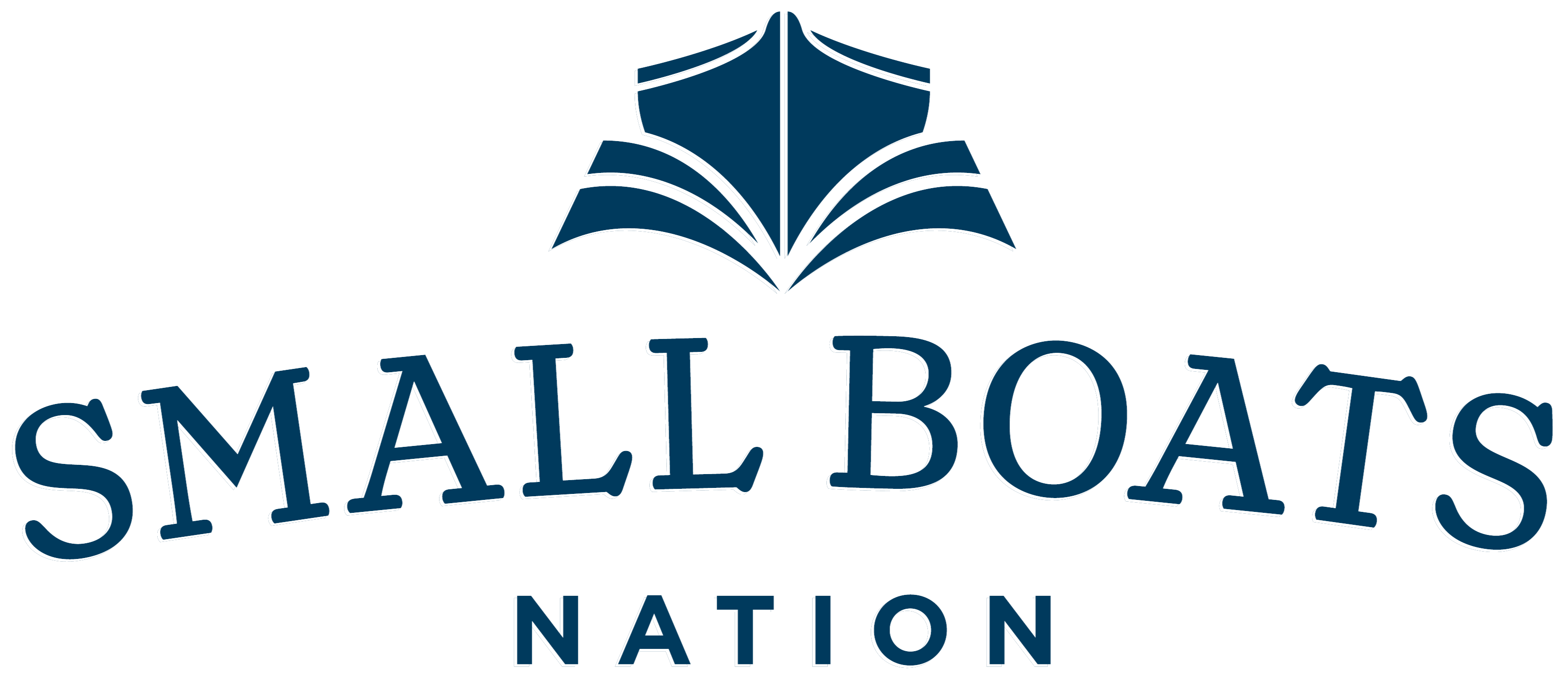
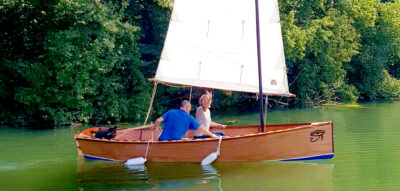
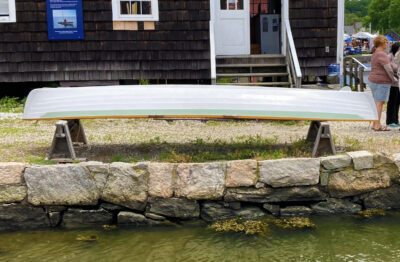
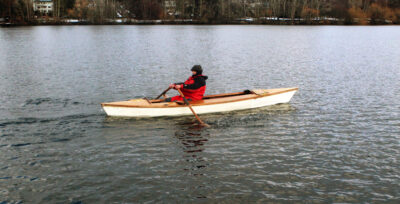
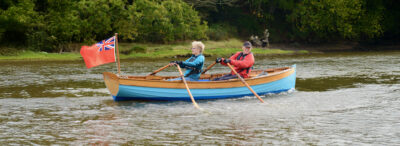
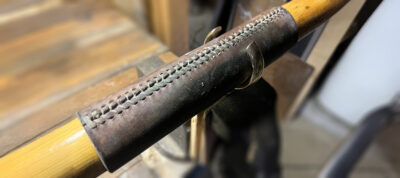
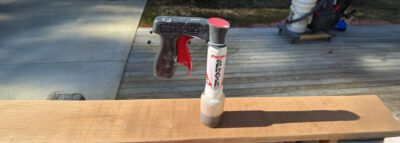


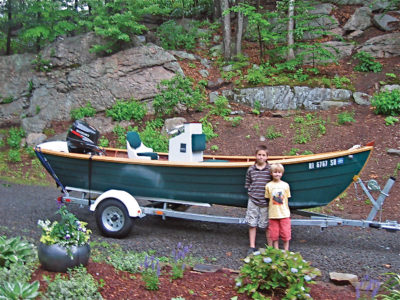

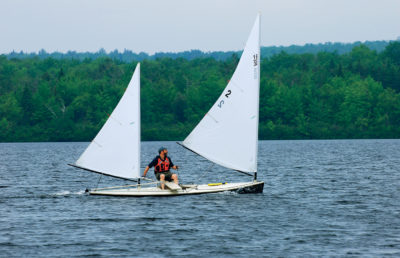
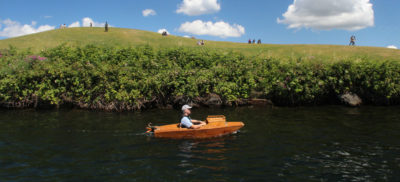
Hi,
Back in the late 90s, I had my own shop, and built seven of these so-called Herreshoff/Gardner pulling boats. One of them was for the singer, Jimmy Buffett. I shipped it from my shop in the Bay Area to Sag Harbor, Long Island. I had to build a box that was 18 feet long by 4 feet wide by 2 feet high. That in itself was a project.
Jimmy passed away a year and a half ago. I was recently contacted by the man dealing with his estate, and was pleased to know that Jimmy used the boat quite a bit. (Sorry, I couldn’t figure out how to add a photo of the boat.)
Hi Steve, I’d be happy to help you upload a photo if you’d like to do that. Just let me know.
“the Herreshoff/Gardner can be a bit squirrely”
I wonder if that may be due to the amount of rocker (2 3/4 inches) used. I have built several similar boats (my own design) with 1 to 1.5 inches of rocker which track well but, of course, may turn less readily. It depends on what you are seeking.
Thank you very much for your article. I have found over the years that the sides of the boat are only needed to keep the water out and can be made in your case, I suspect, with 1/8″ ply. I have made one boat out of carbon fiber and got the weight down to 50 lbs. The only advantage is that it is easier to cartop. Now use one less layer of fibreglass on the sides and though it might feel vulnerable it is quite adequate. A friend in Tasmania makes his from tortured ply.
Fiberglass with wooden gunwales, backrests, and foot stretcher is 66lbs. This means I only have to lift 33lbs onto the roofrack then go to the other end lift and push it on.
I had one of these for about 20 years. Built by Steve Najjar in Redwood City, CA and named Sophisticated Lady. Weighed about 95 pounds. Had a trolley type sliding seat and fixed seat. Went well with either. I mounted a pair of folding outrigger oarlocks I had lying around and used 8′ Shaw and Tenney spoons. It went beautifully in all but crazy weather. I launched off the shore into Lake Ontario. When I hit 85 launching and retrieving got too difficult and I regretfully sold her. Bought an Annapolis Wherry for the weight. Now building an Oughtred Macgregor kit because even lighter.
Some comments as John worked up and built The GREEN MACHINE during my watch at Mystic. The project was in the winter of 1980, with the completion that summer. The boat in the photo is not the original which has been retired; it is one built carefully by the late Myron Young and donated for use.
There was material experimentation. The boat is built using high grade exterior waterproof construction plywood, not marine plywood, and over the years there has been some checking. Most people don’t realize this as John used a piece of cedar for the sheerstrake so you don’t see the ply end grain. It was built before glued lap became a thing and might be able to be made a bit lighter as the fastenings were kind of belt and braces, glued laps and clench nails. There was no real effort made to make it as light as possible.
The GREEN MACHINE was set up to row in one direction as a single, the other as a double so the seat for single rowing could be folded to get it out of the way as you couldn’t get your feet under it when rowing double or carrying a passenger. The third seat for single rowing was put amidships and you pulled from the bow oarlocks.
Boats with these skeg-like stems are extremely sensitive to trim, griping badly if even lightly bow down. Many builders decide the boat is going to be rowed only in one direction and relive the bow stem, and trim the boat accordingly as she is a little bow high when rowed as a single from the stern seat or needs weight in the stern rowed as a single from the bow seat. Some shift the aft seat forward a frame which then means that some stern weight is needed if rowed as a double. Some have added a shallow skeg in the stern.
The boat’s development is interwoven with the Adirondack Guideboat, where one of the problems to solve was how to make artificial natural crook frames. John solved this with glued laminations. His long article details this but because of the double ended shape there were only three shapes needed from which several pairs of frames could be resawn.
Borrowed also from western Adirondack guideboats was the slight rake in the stems, making planking easier than using a plumb stem and the dramatic flare in the topsides. Both are of considerable help in keeping water out of the boat when pulling into a head sea.
John was a bit conservative in oar lengths. The recommended 7’6″ oars work in both rowing positions but the forward position with 48″ between locks can take 8′ oars. Andy Steever in his “Oars for Pleasure Rowing” (available on the Internet Archive) details the oars designed for the boat. They have teflon leathers and are squared inboard of the locks. They have been counterweighted with lead strips, to balance with the weight of your hand. The longer ones took three times the amount of lead.
I became the tester for the boat, taking it out into Fisher Island Sound where there were predictable whitecaps over a bar out from Ram Island. I got her surfing pretty good but the flare kept the bow up surfing. That summer I took her to the Blackburn and won my class. That set off a building spree of race optimized boats.